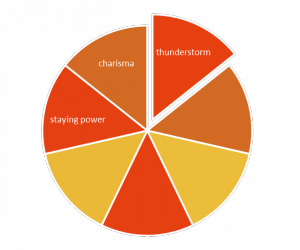Active listening
Active listening is important for building trust between coach and client. It is a way for the coach to show the client that he is compeletly with him and his concerns. Understanding listening enables the client to talk open about stressing, burdensome, unpleasant and even embarrassing situations.
I had a trainer once for “communication in coaching” during accomplishing my coaching seminar who told us that active listening is the most valuable coaching intervention/tool and that we not need more interventions if we are experts in that alone.
So what does it need for active listening?
- Non-verbal communication: First you need to build up a good contact to your client, because that is one of the conditions for active listening. It means you need to have eye contact and your non-verbal communication must show that you are with the client by for example nodding or try to take in the same body language. I mean no imitation, but try to make the client feel equal and understood through your behavior.
- Paraphrasing & summarizing: Second you do paraphrasing. This means you listen and repeat parts of what you heard in your words to show you actually listened and to give the client the chance to be more precise about his wording.
- Mirroring: Third you do mirroring. This means you tell the client what you perceive from his emotions and behavior. “I have the impression that this is a real burden for you.”
- No valuation: Do not valuate.
- Focus on client: The client is in the center of focus. This means you are not meant to speak about yourself; give your opinion or object to what is said by the client.
Give it a try now!
Ask a friend, colleage, family member to tell you about his or her day and try to use the techniques for active listening from above.
How did that work? How did you feel trying out “active listening”?
This excercise does not only train your active listeing skills, it is also good for summarizing, for empathy, for your own awareness on how you act.
Feedback
Feedback is always something that should be asked for. Do not give feedback, if someone does not ask for it. Not only because this can be understood as very rude, but also because everyone is different in taking feedback.
There are certain rules in giving feedback, that you should know about.
Feedback should be…
- …constructively: It should be motivating and empowering instead of crushing. It should give a perspective for further actions.
- …describing: Feedback needs to be objectively in a way, that the situation is rather described then interpreted. The meaning of giving feedback ist to support the other to improve.
- …concrete: No blanket statements, that do not lead to concrete actions.
- …subjective: If you are interpreting, then always from your perspective, so use “I”. “I think…”, “I am the opinion…”, ” I am of the impression that…”
- …positive and negative: Find positive and negative aspects and try to mix them.
- …clear and precise: Say clearly what is needed to be improved in your opinion.
- …realistic: The feedback should be realistic for the person, situation etc.
- …immediatly/ directly: Best to give feedback directly, and not wait for hours and days. It is hard to remember what was done when time strides ahead.
- …asked for: The receiver of the feedback should be the one deciding if he wants it or not. (Seifert 1998, p. 72f.)
The next time shou give feedback, try to remember these points and ask if your are allowed to givee feedback.
Emotional self-awareness
One of the indirect results of coaching is the emotional self-awareness and it is activated by the coach through questions focusing on feelings, affects, etc. But this is not only a result from coaching for the client, but also an ability the coach needs.
For the client it means to be aware of one’s feelings and attitude it is the knowledge or perception of the self. Knowing about your current emotional state and what influences it, is the first step to changing this state.
Give it a try now!
I want to do a little exercise with you. Think of a current problem and try show it by your mimic, your gestic and your posture an remain there for a few seconds. Afterwards please think of a very happy event in your live and show it likewise. Reflect on how it feels and what you think by taking in the different states!
For your coaching process you can invite the client to think of a moment of pure happiness or a former success or of a hot chocolate with marshmellows. At least that would work with me.
Just say: “Can you imagine a moment where you were really happy? How did it feel? What did you think” Or you can do that future oriented by asking “Imagine your problem is solved. What is there then? How does it feel? What do you think then?
Reflect on the excercises together with others!
Reflect on the excercises with others in TalkReflect.


